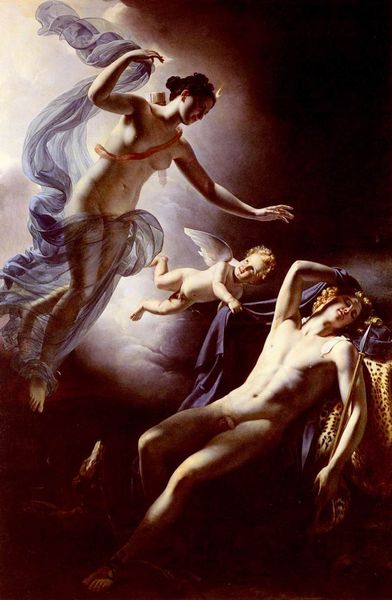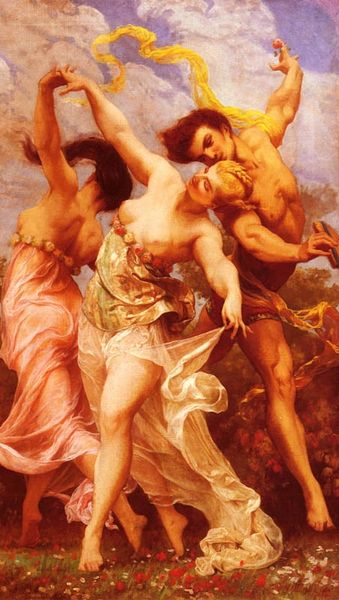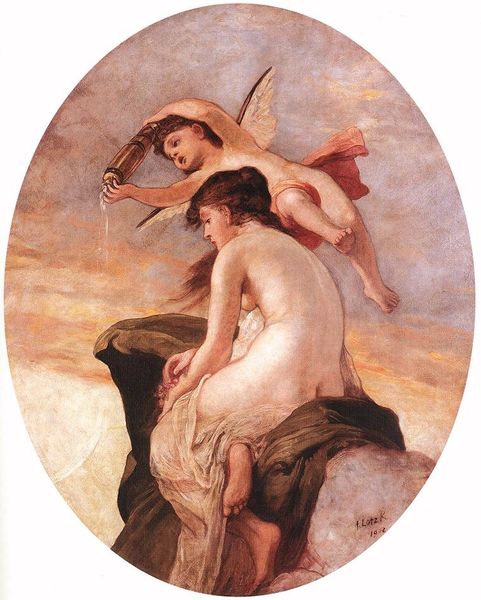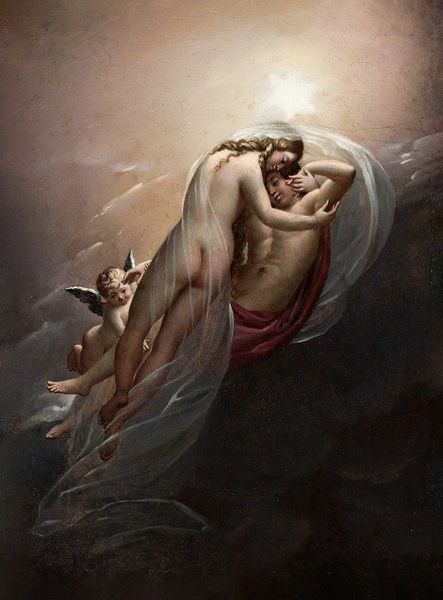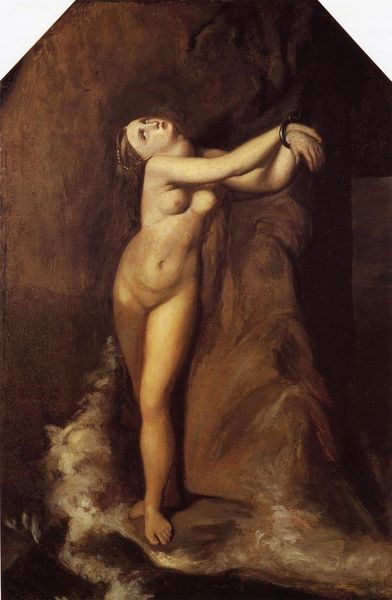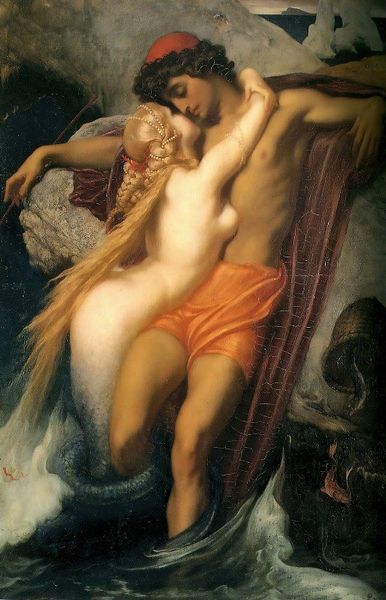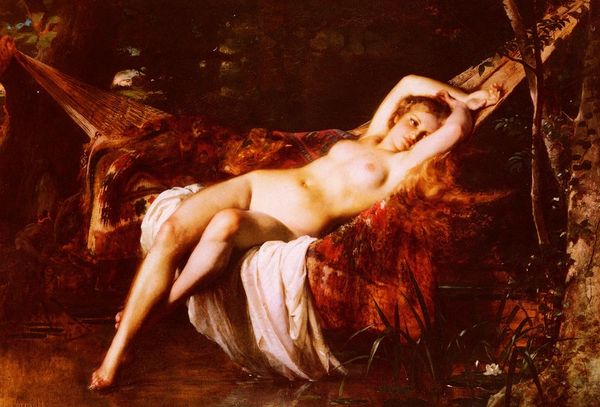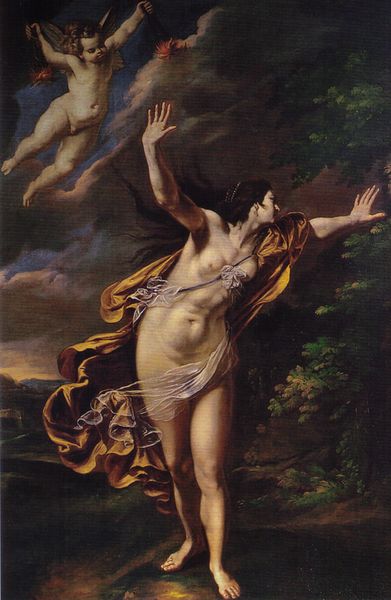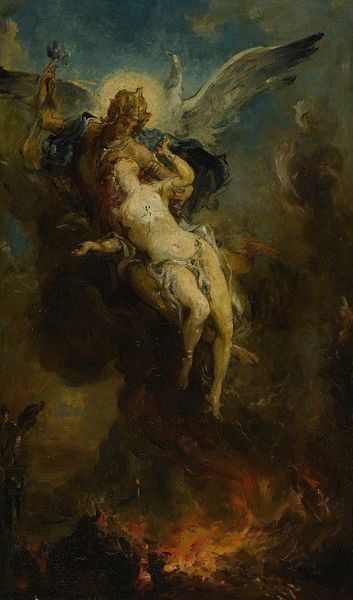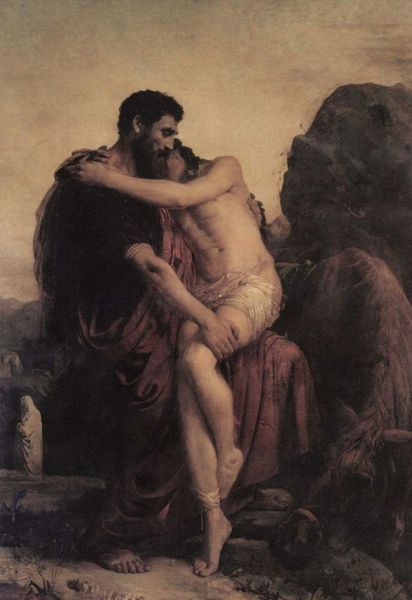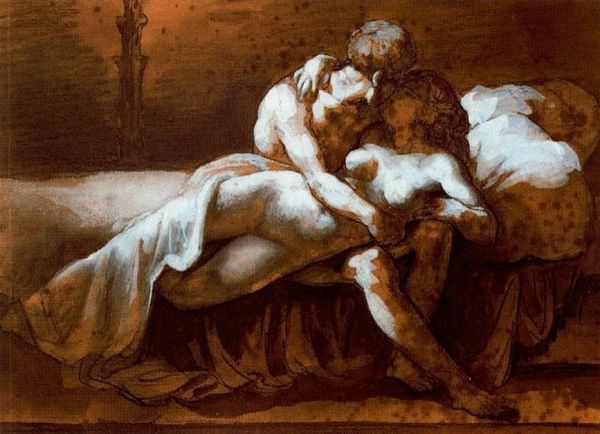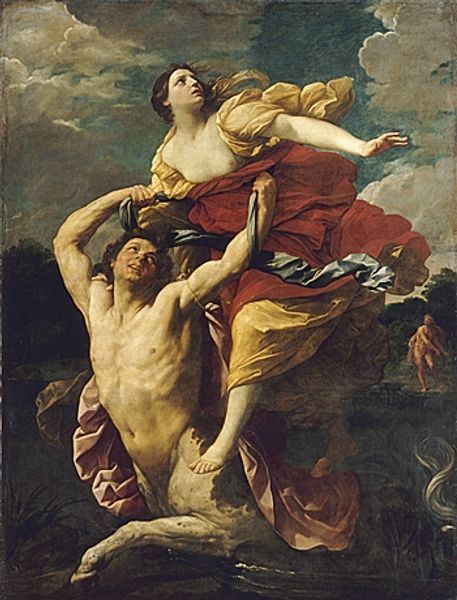
painting, oil-paint
#
allegory
#
narrative-art
#
painting
#
oil-paint
#
charcoal drawing
#
figuration
#
romanticism
#
history-painting
#
nude
Dimensions: 194.3 x 279.4 cm
Copyright: Public domain
Curator: This painting presents Gustave Doré's interpretation of the tragic tale of Paolo and Francesca da Rimini. He rendered this scene using oil paint, vividly portraying the ill-fated lovers. Editor: My initial impression is one of sheer theatrical drama. The composition pulls the viewer upward into a maelstrom of grief. Curator: Doré has staged it masterfully, hasn't he? The lovers are swept into an eternal whirlwind, a punishment befitting their adultery as depicted in Dante's Inferno. Note how their bodies are entwined. They're locked together by fate, but drained of all earthly joy. Editor: Absolutely. Their contorted posture communicates an emotional turmoil; there's also a profound lack of grounding. This evokes a sense of complete and utter helplessness. Consider the use of dark hues; the red tones that permeate the scene create an almost palpable sense of burning despair. Curator: That's key. Doré uses color to reinforce the themes of damnation. The red indeed speaks of hellfire, while the dark billowing cloth swirling around them symbolizes sin and secrets. It envelops them. This contrasts starkly with the pallid flesh of the lovers themselves. This tonal difference speaks to innocence lost. Editor: Right. This juxtaposition generates visual tension, intensifying the artwork's unsettling mood. The formal device also allows him to emphasize the vulnerability of the figures against the vastness of divine retribution. The artist draws your attention to the narrative implications here. What impact was Doré trying to have on his audience? Curator: His aim wasn't merely to illustrate Dante's words. It was to grapple with the consequences of transgression, painting adultery and its outcome in a visually compelling cautionary tale. One can argue he meant to explore social codes. Did Doré make a definitive pronouncement on their fate, or does it linger in ambiguity? Editor: That's a crucial question. Does the very act of depicting it grant them a kind of immortality, defying complete erasure from collective memory? I see Doré challenging the prevailing social narratives of his time with complex, multi-layered readings of sin and punishment. Curator: Perhaps by emphasizing the tragedy, Doré prompts us to ponder our judgments—and the structures behind those pronouncements. It is certainly a provocative commentary, even today. Editor: Agreed. It’s a fascinating study, both artistically and socially, demonstrating art’s potent capacity to question, unsettle, and incite meaningful conversation across epochs.
Comments
No comments
Be the first to comment and join the conversation on the ultimate creative platform.
